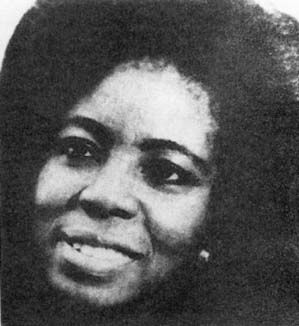Related Research Articles

Nigel James Hitchin FRS is a British mathematician working in the fields of differential geometry, gauge theory, algebraic geometry, and mathematical physics. He is a Professor Emeritus of Mathematics at the University of Oxford.

Olga Aleksandrovna Ladyzhenskaya was a Russian mathematician who worked on partial differential equations, fluid dynamics, and the finite difference method for the Navier–Stokes equations. She received the Lomonosov Gold Medal in 2002. She is the author of more than two hundred scientific works, among which are six monographs.

Iris Marie Mack (1956–2022) was an American writer, speaker, and mathematician.
Lesley Millman Sibner was an American mathematician and professor of mathematics at Polytechnic Institute of New York University. She earned her Bachelors at City College CUNY in Mathematics. She completed her doctorate at Courant Institute NYU in 1964 under the joint supervision of Lipman Bers and Cathleen Morawetz. Her thesis concerned partial differential equations of mixed-type.
Marion Gray was a Scottish mathematician who discovered a graph with 54 vertices and 81 edges while working at American Telephone & Telegraph. The graph is commonly known as the Gray graph.

Laure Saint-Raymond is a French mathematician, and a professor of mathematics at Institut des Hautes Études Scientifiques (IHES). She was previously a professor at École Normale Supérieure de Lyon. She is known for her work in partial differential equations, and in particular for her contributions to the mathematically rigorous study of the connections between interacting particle systems, the Boltzmann equation, and fluid mechanics. In 2008 she was awarded the European Mathematical Society Prize, with her citation reading:
Saint-Raymond is well known for her outstanding results on nonlinear partial differential equations in the dynamics of gases and plasmas and also in fluid dynamics. [...] Saint-Raymond is at the origin of several outstanding and difficult results in the field of nonlinear partial differential equations of mathematical physics. She is one of the most brilliant young mathematicians in her generation.
Nancy Burgess Hingston is a mathematician working in differential geometry. She is a professor emerita of mathematics at The College of New Jersey.

Argelia Velez-Rodriguez is a Cuban-American mathematician and educator. She was the first Black woman to earn a doctorate in mathematics in Cuba.
Lars Håkan Eliasson is a Swedish mathematician.
Deborah Tepper Haimo (1921–2007) was an American mathematician who became president of the Mathematical Association of America (MAA). Her research concerned "classical analysis, in particular, generalizations of the heat equation, special functions, and harmonic analysis".

Margaretta Palmer (1862–1924) was an American astronomer, one of the first women to earn a doctorate in astronomy. She worked at the Yale University Observatory at a time when woman were frequently hired as assistant astronomers, but when most of these women had only a high school education, so Palmer's advanced degree made her unusual for her time.
Eleanor "Nora" Pairman, also known as Nora Brown, was a Scottish mathematician and only the third woman to receive a doctorate in math from Radcliffe College in Massachusetts. Later in life she developed novel methods to teach mathematics to blind students.

Mary Graustein was a mathematician and university professor, and was the first woman to earn a doctorate in mathematics (1917) at Radcliffe College.
For the American educational psychologist and expert on educational assessment, see Nancy Cole.
Marie Johanna Weiss was an American mathematician, university professor and textbook author. In 1927, she became the first woman to earn a PhD in mathematics from Stanford University.
Frances Ellen Baker (1902–1995) was an American mathematician who became a professor of mathematics and chair of the mathematics department at Vassar College.
Janet McDonald (1905–2006) was an American mathematician who specialized in geometry, specifically the concept of Conjugate Nets. She taught at Vassar College for 27 years and was named professor emerita in 1971.
Violet Bushwick Haas was an American applied mathematician specializing in control theory and optimal estimation who became a professor of electrical engineering at Purdue University College of Engineering.
References
- 1 2 3 4 5 6 7 8 9 10 11 12 Green, Judy; LaDuke, Jeanne (2009). Pioneering Women in American Mathematics: The Pre-1940 PhD's . American Mathematical Society. p. 162. ISBN 978-1-4704-1839-7.
- ↑ Thorndike, Frances (October 1926). "Applications of Poisson's Probability Summation". Bell System Technical Journal . 5 (4). Nokia Bell Labs, Institute of Electrical and Electronics Engineers: 604–624. doi:10.1002/j.1538-7305.1926.tb00126.x. ISSN 0005-8580.